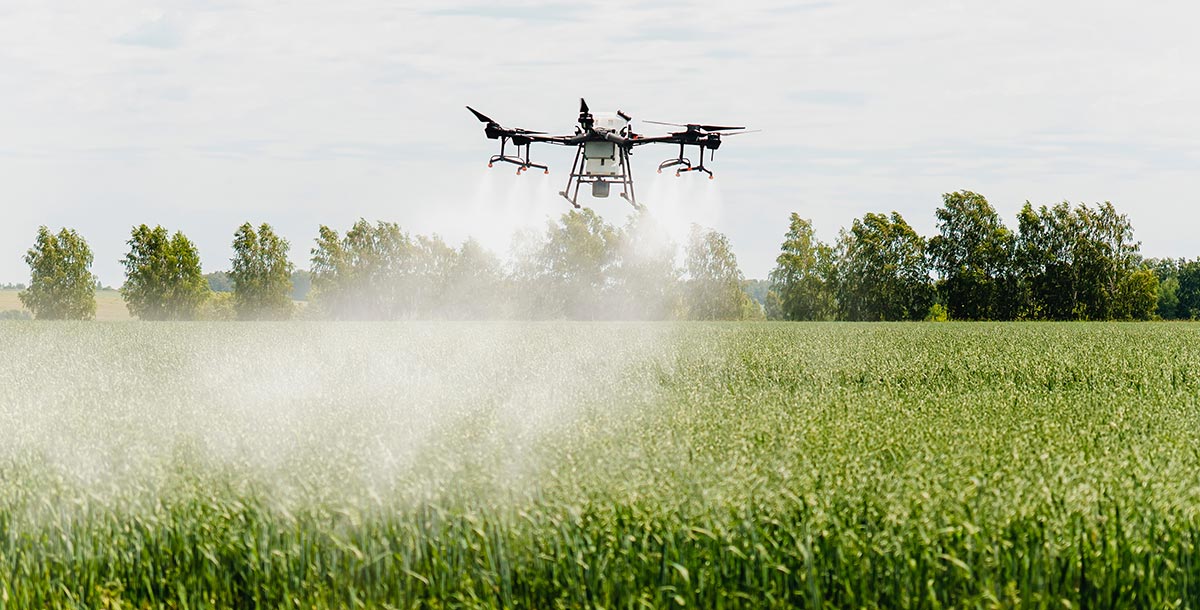I didn’t grow up on a farm, but I’ve always had deep respect for the people who work the land. There’s something grounding about the cycles of planting and harvesting. It’s honest, physical, and demands long-term thinking. As someone who’s worked in business and technology, I’ve often asked how we can use innovation to support those who feed the world. That’s what led me to agriculture, and more specifically, agricultural drones.
At first glance, drones might seem like a flashy toy. But when you pair them with the right data and a clear purpose, they become powerful tools for sustainability. The more I learned, the more I saw the potential: drones can transform how we grow food, protect our environment, and make farming more efficient for the people who work hardest.
Let me break down how.
Smarter Water Use: Precision Irrigation
Water is life, but it’s also a limited resource. For farmers, using water wisely is about more than just conservation, it’s about survival. Traditional irrigation methods often flood entire fields, regardless of whether every square foot actually needs moisture. That’s where drones come in.
Equipped with thermal sensors and multispectral cameras, drones can fly over fields and detect dry spots with surprising accuracy. Instead of guessing where water is needed, farmers get a visual map of their crops and soil. That allows them to irrigate only the areas that actually need it. The result is less waste, healthier plants, and lower water bills.
In a world facing droughts and changing weather patterns, this kind of precision isn’t just helpful. It’s essential.
Catching Problems Early: Disease and Pest Detection
One of the most fascinating things about drone technology is how it allows us to see things we wouldn’t otherwise notice. A drone can detect signs of disease or insect damage in plants days or even weeks before it becomes obvious to the human eye.
This early detection is critical. Farmers can act fast, isolating affected areas, applying targeted treatments, or adjusting their practices before problems spread across entire fields. Instead of blanket-spraying chemicals, which costs time and money and harms the environment, they can respond with precision.
That’s a game changer. It means healthier crops, reduced chemical use, and more sustainable practices overall.
Less Spray, More Gain: Reducing Pesticide Use
Let’s be honest. No one likes the idea of pesticides, but for many farmers, they’ve been a necessary part of protecting crops. The question is, how can we reduce their use without putting yields at risk?
Drones offer an answer. With real-time imaging and AI-powered analytics, drones can help farmers know exactly where to spray, and where not to. That kind of control means less pesticide runoff, lower costs, and fewer harmful residues in the food we eat.
It also opens the door to more organic and regenerative practices, because farmers aren’t relying on chemicals as a catch-all solution. Instead, they can manage their land with intention.
Better Yields, Smarter Decisions
At the end of the day, a farmer’s success depends on what they can bring in at harvest. Drones contribute here, too. By collecting data on plant growth, soil health, weather conditions, and more, drones provide a bird’s-eye view of a field’s potential.
This data helps farmers make informed decisions throughout the season. When to plant. When to harvest. Where to focus attention. It removes some of the guesswork and gives farmers a chance to adapt in real time.
It’s not just about bigger yields, it’s about more consistent, reliable results. That makes a real difference, especially for smaller operations working on thin margins.
Bridging Innovation and Tradition
One of the things I admire most about agriculture is its connection to tradition. Farmers carry generations of knowledge. They know the feel of their soil, the timing of their seasons, the rhythm of nature. My goal isn’t to replace any of that. It’s to enhance it.
Drones are just another tool in the toolbox, one that offers farmers more control, more insight, and more opportunity. But it only works if it’s built on respect. Technology must serve the people using it, not the other way around.
That’s something I think about every time I meet with growers. It’s not about selling them on tech for tech’s sake. It’s about understanding their challenges and helping them use drones to meet those challenges more effectively.
Why This Matters Now
The global population is growing. Climate change is reshaping weather patterns. Resources are limited. And yet, we still need to feed billions of people without destroying the planet in the process.
That’s a big ask. But I believe drones can be part of the answer. They help us farm smarter, not harder. They help us reduce our footprint while increasing our impact. And they allow us to bring technology to one of the oldest and most important human professions in a way that feels meaningful and respectful.
Grounded Vision, Forward Thinking
For me, it always comes back to this: progress should never come at the cost of people or the planet. When I look at a drone flying above a field, I don’t just see wires and wings. I see a bridge—between innovation and stewardship, between tech and tradition.
Agriculture doesn’t need to choose between the past and the future. With the right tools, it can hold both. That’s what keeps me passionate about this space, and that’s why I’ll keep working to put more eyes in the sky, and keep our roots firmly in the soil.
